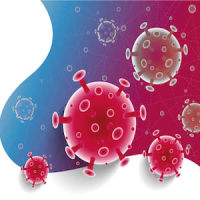COVID-19 is still a new disease, and clinicians continue to struggle with finding effective treatments. Among the many treatments that have been evaluated, glucocorticoids and IL-6 receptor antagonists have been shown to reduce mortality in hospitalised COVID-19 patients, and glucocorticoids have shown benefit in critically ill patients.
Convalescent plasma is an antiviral treatment with immunomodulatory properties. It may benefit critically ill COVID-19 patients with multiorgan dysfunction. However, convalescent plasma in COVID-19 patients has either been used outside clinical trials or in randomised clinical trials that have not focused on critically ill patients with COVID-19.
The Randomized, Embedded, Multifactorial, Adaptive Platform Trial for Community-Acquired Pneumonia (REMAP-CAP) was conducted to determine whether convalescent plasma would improve outcomes for critically ill adults with COVID-19. The primary endpoint of the study was organ support-free days up to day 21. Secondary outcomes included in-hospital survival, 28-day survival, 90-day survival, respiratory support-free days, cardiovascular support-free days, progression to invasive mechanical ventilation, extracorporeal mechanical oxygenation, or death, ICU length of stay, hospital length of stay, WHO ordinal scale score at day 14, venous thromboembolic events at 90 days and serious adverse events.
The study included adults with suspected or confirmed COVID-19. Two thousand and eleven critically ill adults were randomised to open-label interventions in the immunoglobulin domain at 129 sites in four countries. One thousand and eighty-four participants received two units of high-titer, ABO-compatible convalescent plasma within 48 hours of randomisation, while 916 patients did not receive convalescent plasma.
Findings show that among the 2011 participants, the median number of organ support-free days was 0 in the convalescent plasma group and 3 in the non-convalescent group. In-hospital mortality rate was 37.3% for the convalescent plasma group versus 38.4% for the non-convalescent plasma group. Treatment effects were consistent across the primary outcome and most secondary outcomes. Serious adverse events were reported in 3% of the participants in the convalescent plasma group and 1.3% in the non-convalescent plasma group.
Overall, these findings show that in critically ill patients with COVID-19, treatment with convalescent plasma had a low likelihood of improving the number of organ support-free days.
Source: JAMA
Image Credit: iStock



























